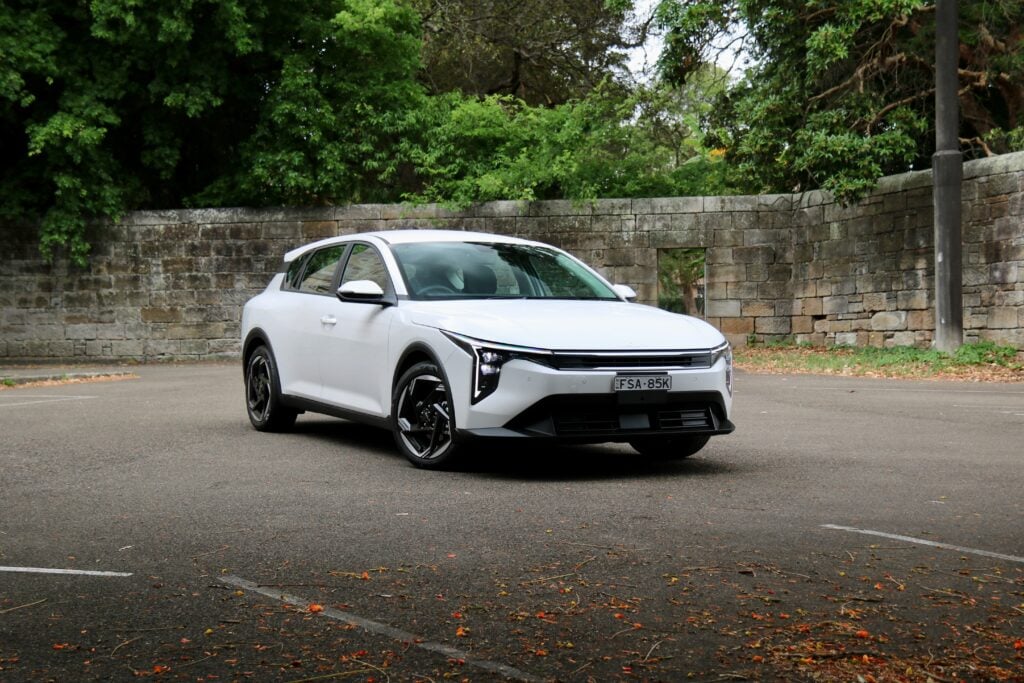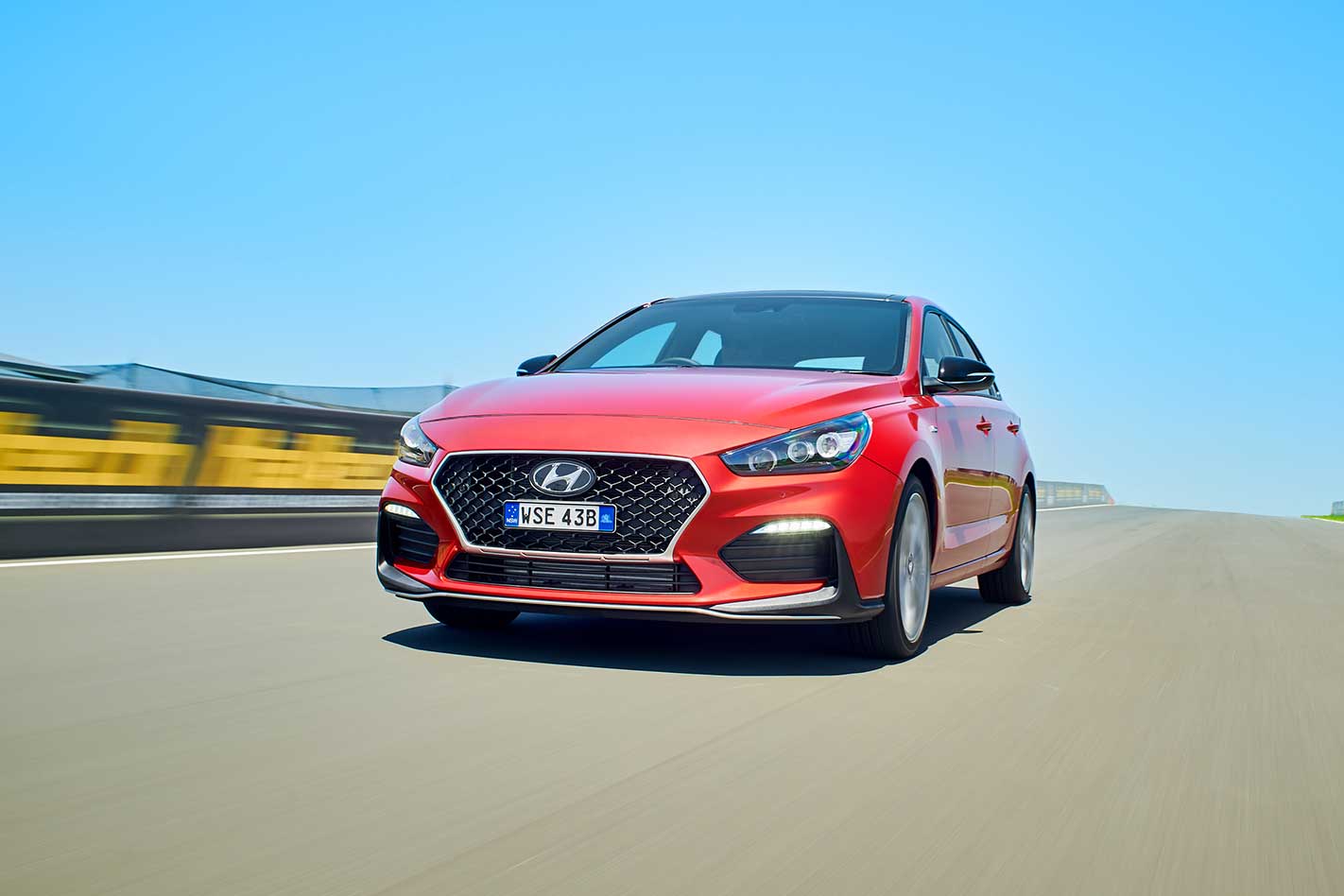
Hyundai took a risk launching its N-Line, erm, line in late 2018 on the back of its fledgling N performance brand.
Without the cachet of something like AMG, M or Audi Sport, it was hard to gauge how N-Line would catch on.
However, the i30 N-Line has returned to the range after a mid-life update, suggesting the variant is doing well.
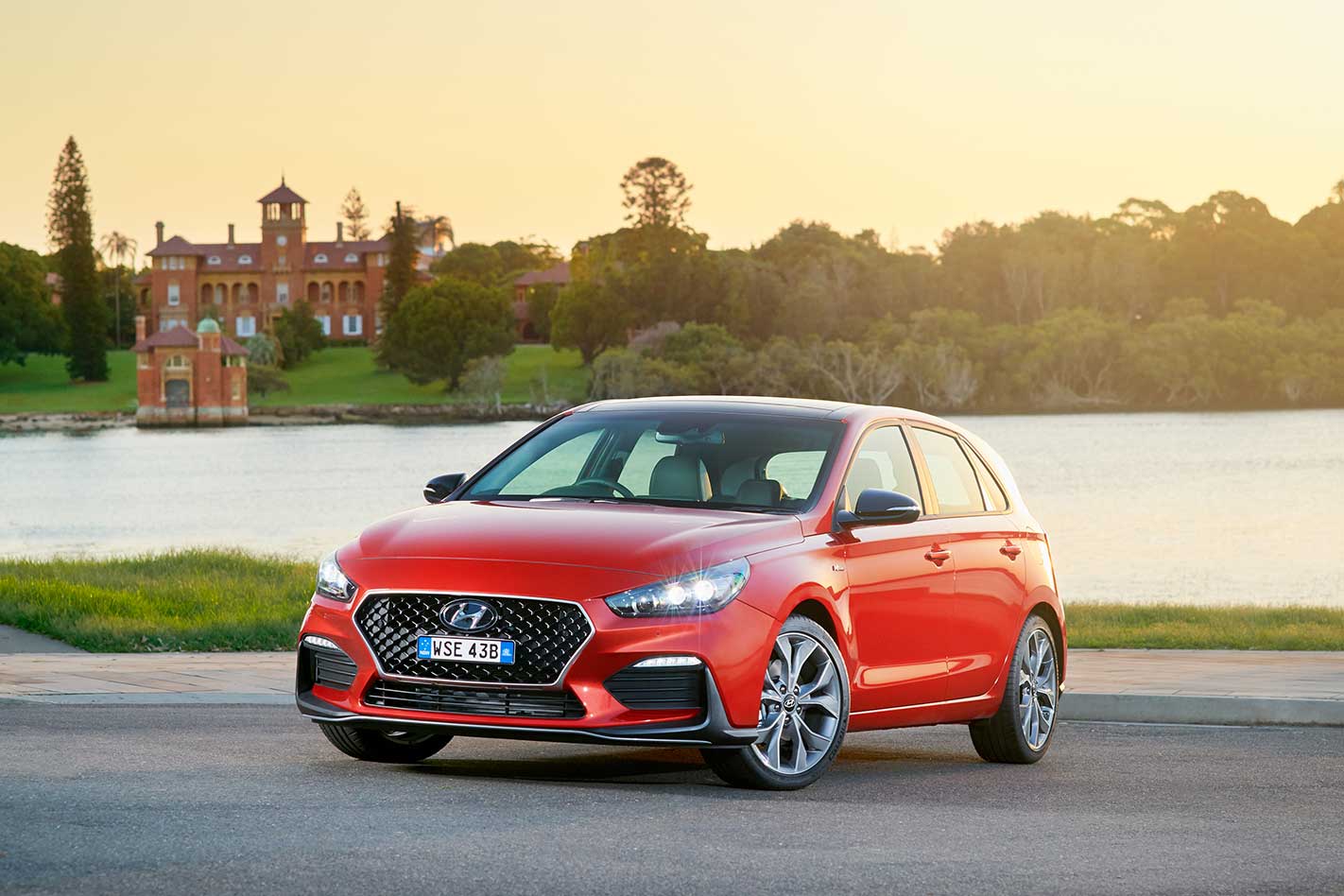
The N-Line recipe is much the same as before, using a turbocharged 1.6-litre four-cylinder petrol engine and a more expensive rear multi-link suspension setup.
As you might notice, it also looks very familiar. Because the Australian-market i30 N-Line comes from Korea, it misses out on the facelift sold elsewhere, so our i30 range carries over the same exterior design.
Still, it’s worth pointing out the N-Line has a unique black front and rear bumper apron, a dedicated 18-inch wheel design with wider Michelin performance tyres and a dual-tip exhaust system.
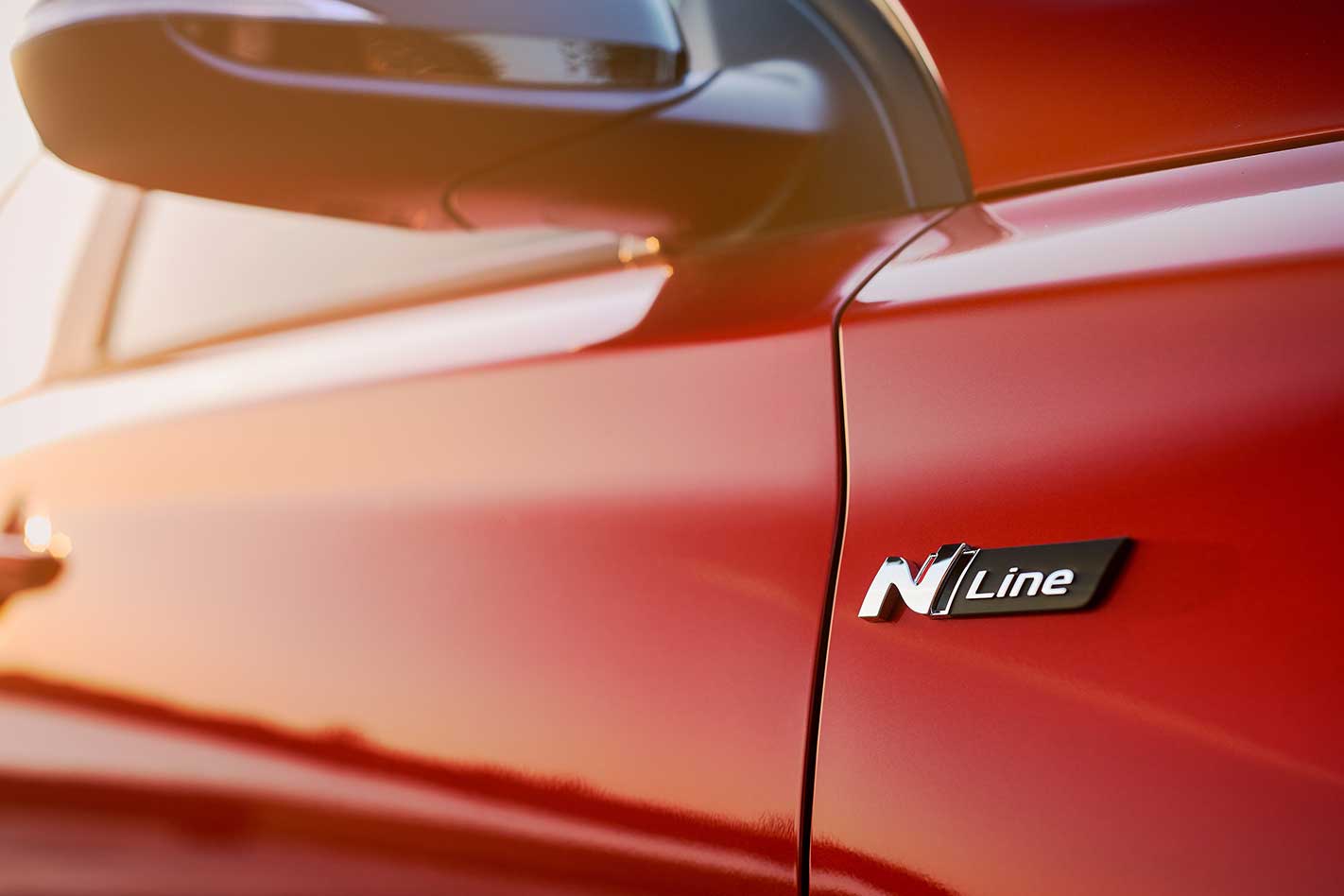
Inside, the N-Line also scores sports seats, red interior stitching, coloured seatbelts and black headlining. Our top-of-the-range Premium grade adds a cloth headliner finish, while the steering wheel, gear lever and alloy pedals are other N-Line exclusive touches.
Price and features (6.5/10)
Competition for the N-Line ranges far and wide, beginning with the Ford Focus ST-Line at $29,490 (before on-roads), then finding the Toyota Corolla Sport automatic for $32,965, Kia Cerato GT for $33,690, Peugeot GT-Line for $34,990 and Alfa Romeo Giulietta Super TCT for $35,590. And finally, it finishes with the Mazda 3 G25 automatic for $38,590.
At $36,220, our Hyundai i30 N-Line Premium DCT sits at the pointy end of this bunch, commanding a $4800 premium over the regular N-Line with a dual-clutch transmission.

Priced online, Hyundai says the i30 N-Line Premium would cost us $40,343 driveaway in Victoria, with two packs offered as options.
First is the Interior pack, adding a cargo liner, tailored carpet floor mat and dash mat. The Sports 18 pack adds satin black alloy wheels and an N lower door decal in gloss black. Metallic paint adds $512 to the driveaway price.
Ownership costs (7/10)
An N-Line presents as a typical ownership prospect for a Hyundai thanks to a five-year unlimited-kilometre warranty and lifetime service plan.
If you purchase pre-paid servicing, this averages over five years to a cost of $229 per year, but the plan is limited to 50,000km.
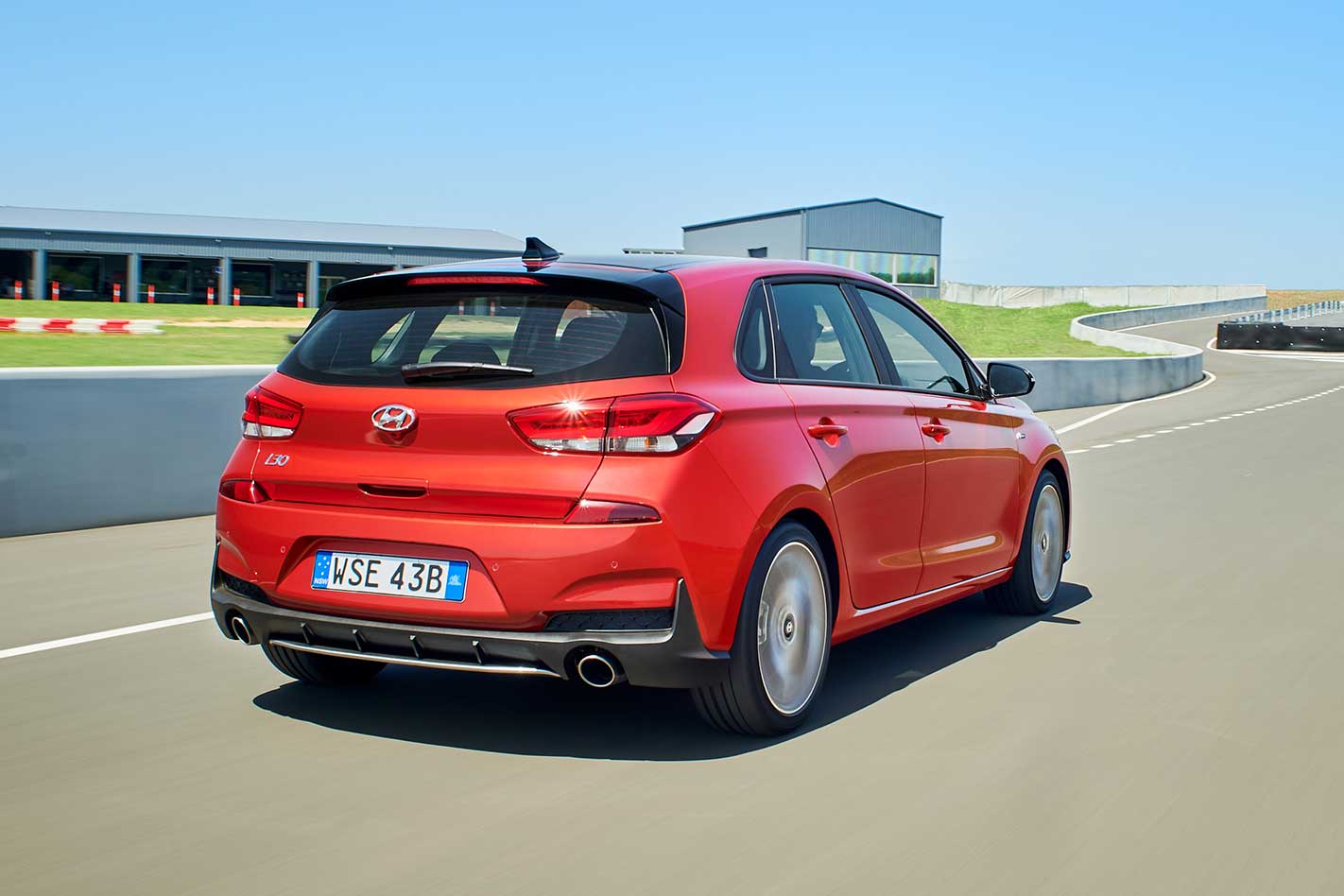
Only Ford, Mazda, Kia and Toyota can match that warranty package, while Ford, Mazda and Toyota can also go the distance with lifetime capped price servicing.
The i30 N-Line Premium is relatively good at the bowser. Despite a higher-performance engine, the N-Line can tolerate low-grade 91 RON petrol and small-concentration ethanol blends like E10.
However, while Hyundai claims the N-Line with a dual-clutch is the most frugal i30 hatch available, we could not verify its 7.1L/100km claimed consumption figure. Our drive, comprising a mix of highway, spirited and city driving, returned an 8.2L/100km figure on 98 RON.
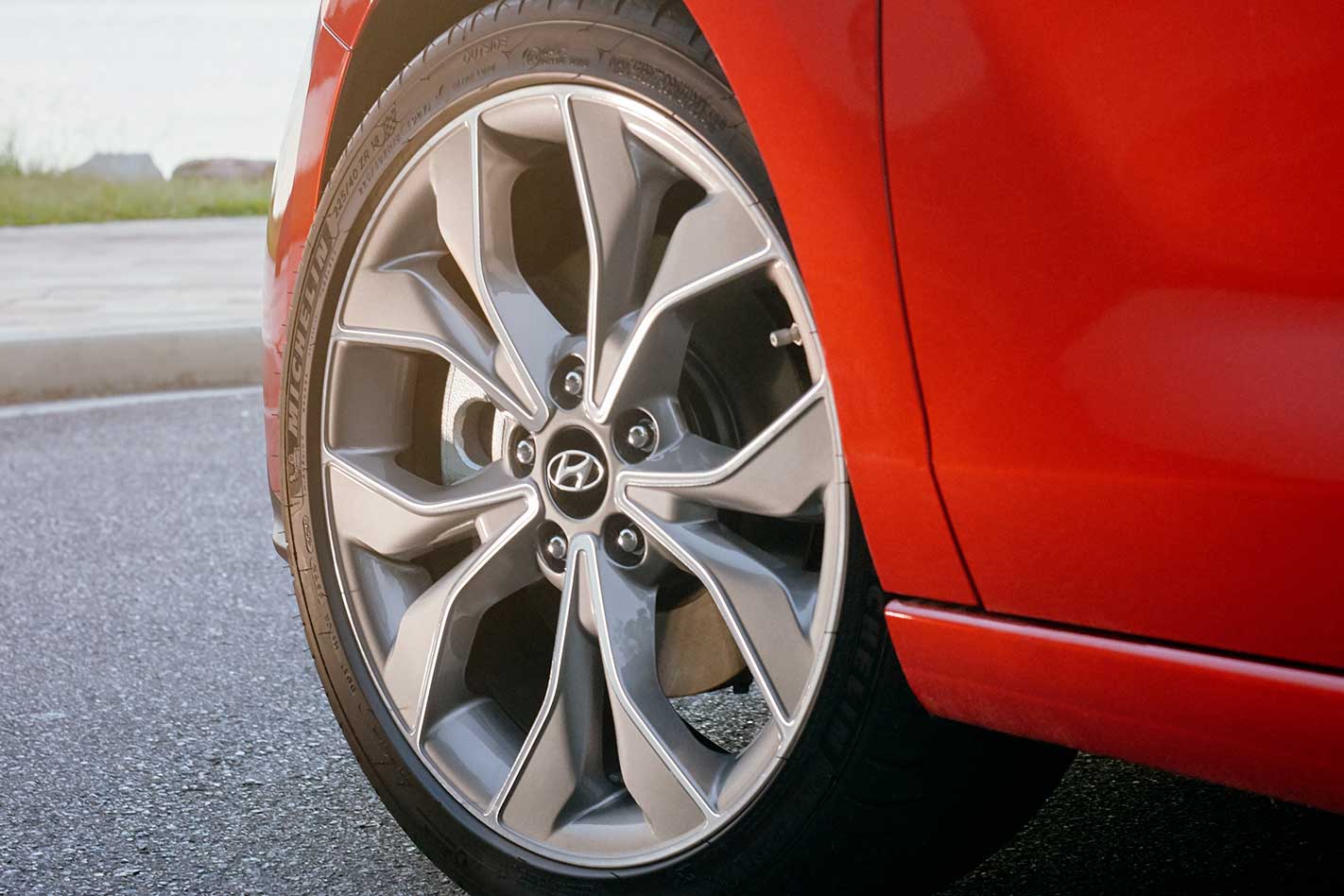
Other things to consider on a higher-performance car like this are the Michelin Pilot Sport 4 tyre set that can cost $900 to $1100 at leading tyre outlets to replace.
Comfort and convenience (8/10)
While the new i30 Sedan upgrades to the Hyundai K3 platform, the hatch remains on K2 architecture. So instead of a new interior, the i30 N-Line Premium only debuts a 10.25-inch multimedia screen.
The screen is hard to ignore, but the crisper and updated graphics modernise the cabin even if the software is no more intuitive than before.

Elsewhere, the N-Line Premium adds a panoramic sunroof, solar control glass, sun visor extensions, self-dimming mirror, power outlet in the boot, ventilated/heated front power-adjustable seats, rear courtesy and map-reading lights, and a luggage net.
Premium audio, digital radio, satellite navigation and parking guidance with a front-view camera round out the other steps up in luxury. They go some way to adding class and the supportive seats are nice, but the i30’s centre stack and console are starting to look dated.
Safety (7/10)
The N-Line Premium’s SmartSense safety suite includes adaptive cruise control, autonomous emergency braking, lane-keeping, lane-following and high-beam assist systems plus driver attention monitoring.
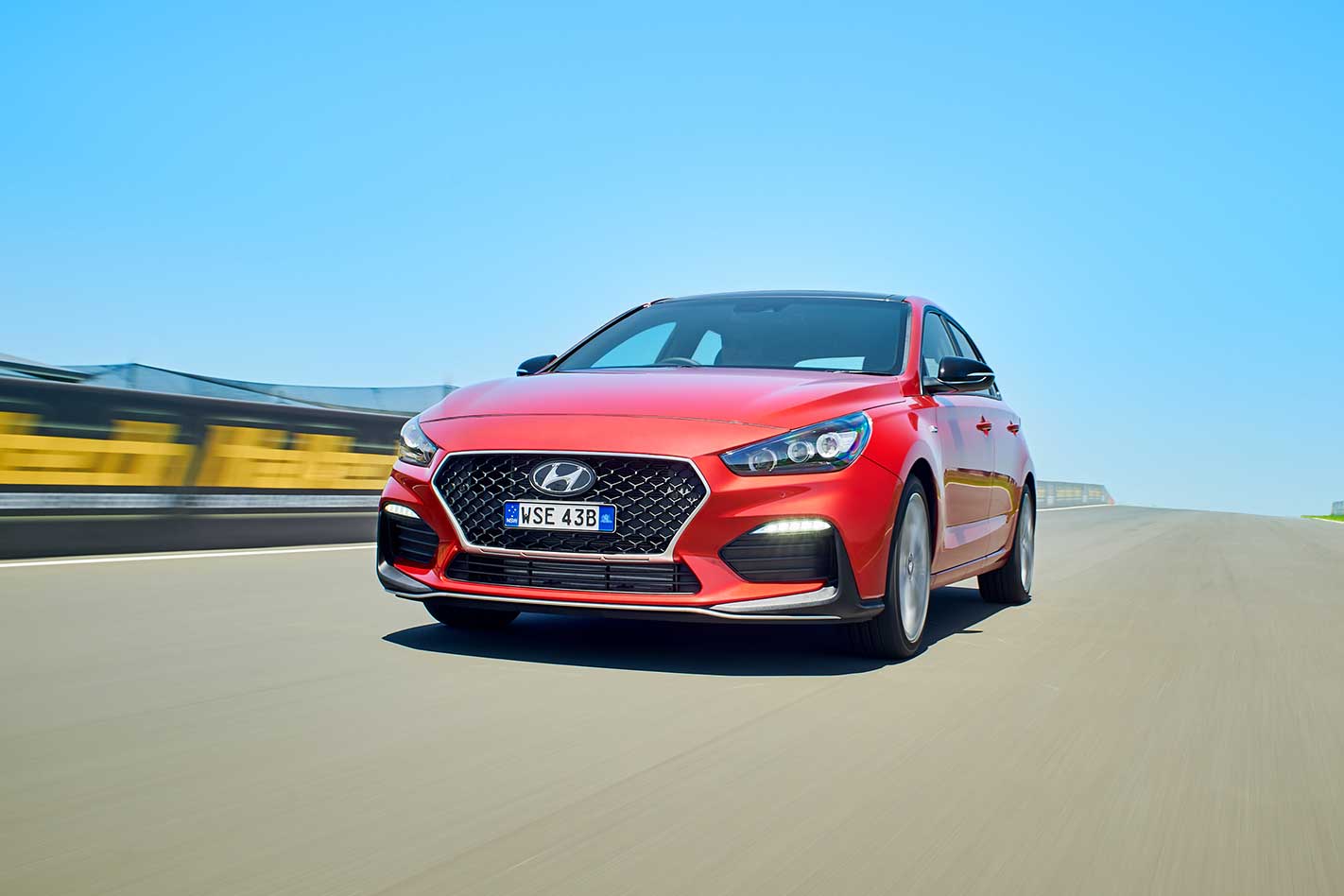
Curiously though, the N-Line Premium foregoes some features found on the i30 Elite, like rear-cross traffic alert, safe exit warning and blind-spot collision warning. And if your i30 N-Line Premium is manual, it also misses out on distance-keeping cruise control.
Out on the road, its active safety systems work well, with good radar detection and progressive intervention on the brakes and steering.
Power and performance (9.5/10)
Fun, winding roads are where the N-Line Premium comes into its own in the i30 range, courtesy of a turbocharged engine that delivers 150kW and 265Nm, or 30kW and 62Nm more than the regular i30.
All that extra power equals stronger acceleration. And while there are no claimed performance times, you can feel it is noticeably faster in a straight line and well into warm hatch territory for grunt and response.
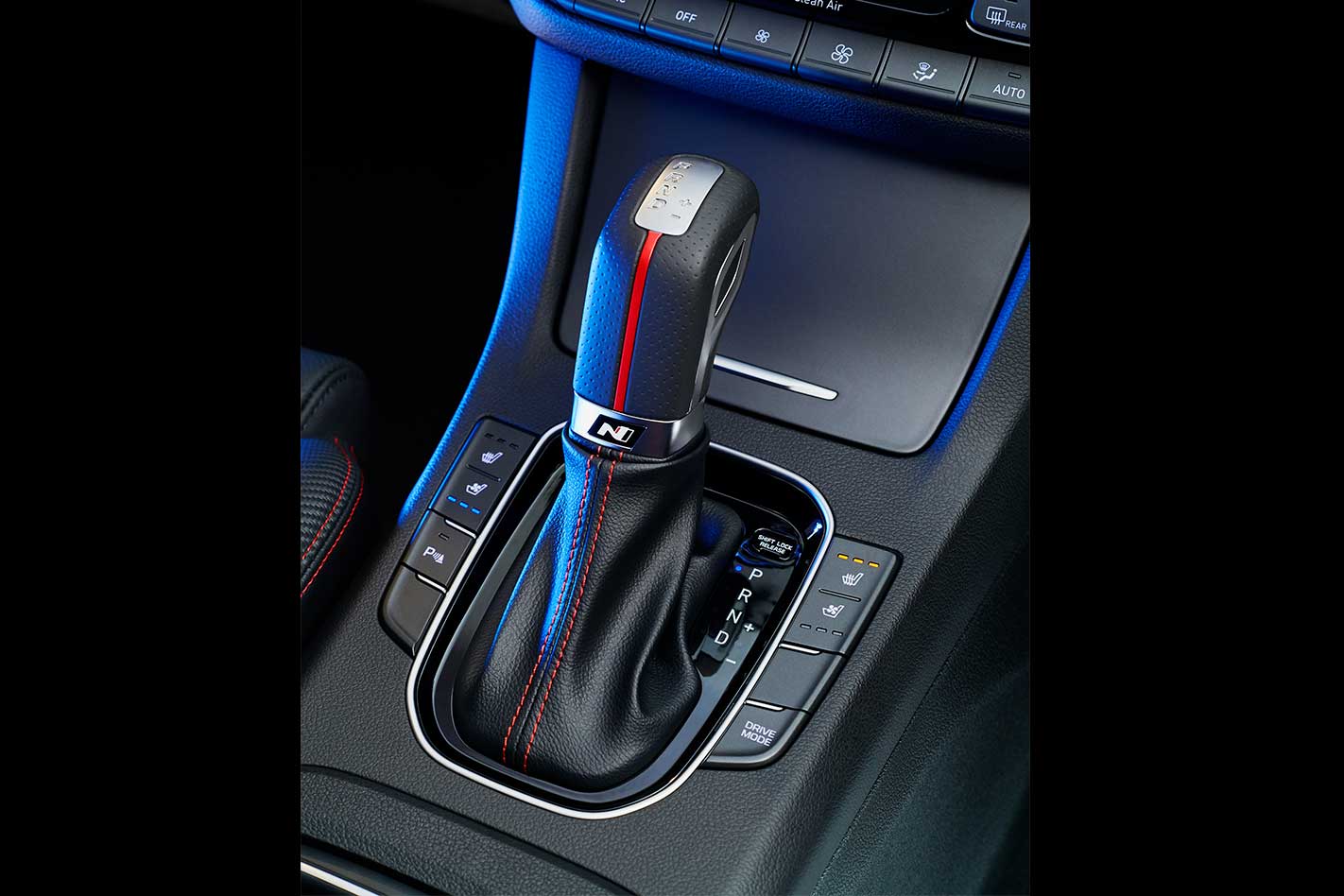
Mash the accelerator, however, and the turbocharger needs a moment to keep up with how quickly the transmission can downshift into a lower gear.
If you have more rugged use in mind, Hyundai says both the manual and dual-clutch transmission N-Line Premium can tow a 600kg trailer without brakes, or a 1300kg trailer with brakes, while the maximum tow ball download weight is 75kg.
But we would think about an i30 N-Line equipped with a manual for towing, given their reputation as a more robust option.
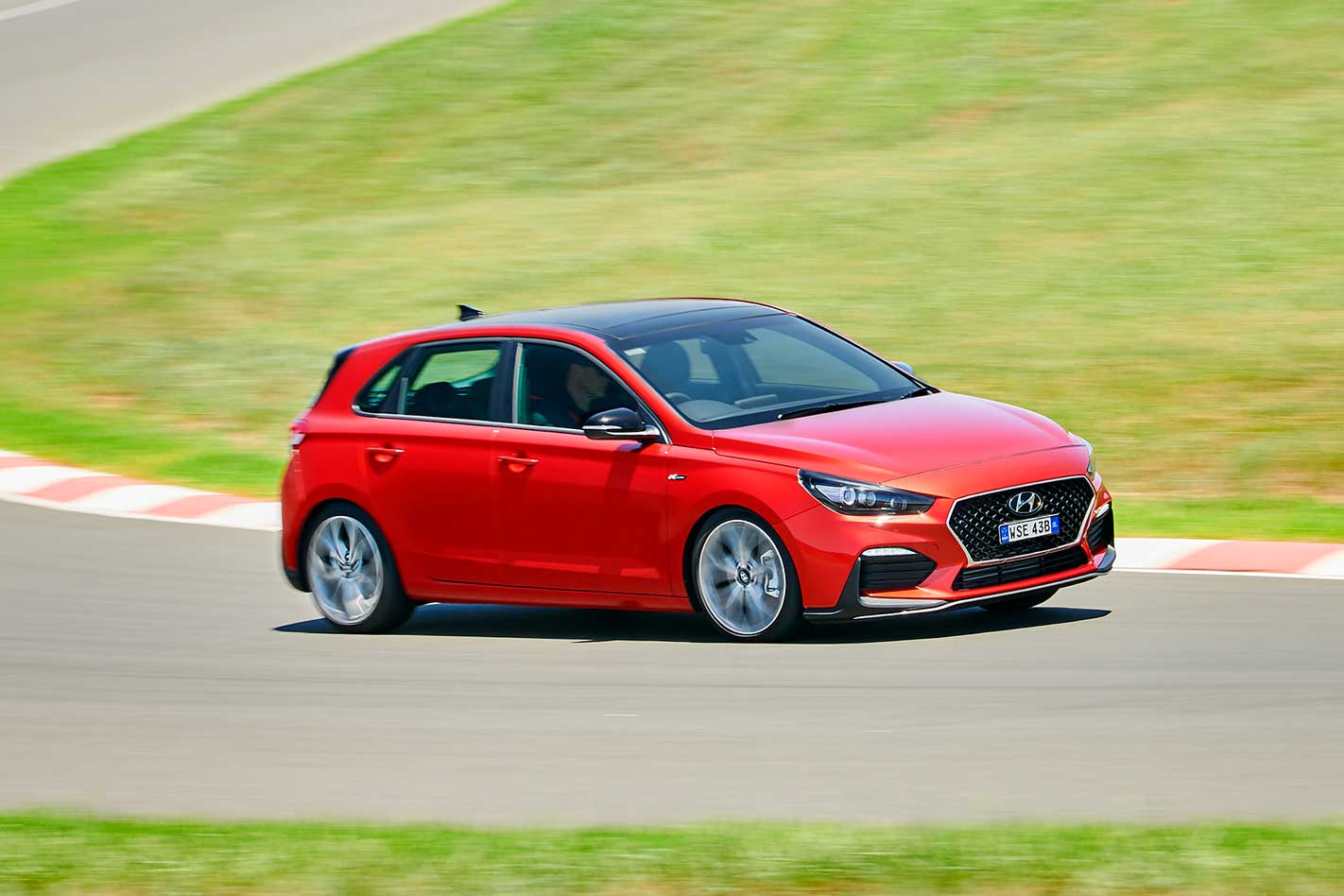
Driving it only a week after the new i30 Sedan, which rides on the lower, stiffer K3 platform, reveals how well engineers did to achieve the levels of body control and steering response the i30 N-Line offers on its older, higher-riding platform.
Corners are where its heavier steering comes alive. The N-Line feels planted and in control at all times, encouraging you to have a go. The front wheels can also handle most of the engine torque when accelerating hard out of corners, avoiding wheel spin.
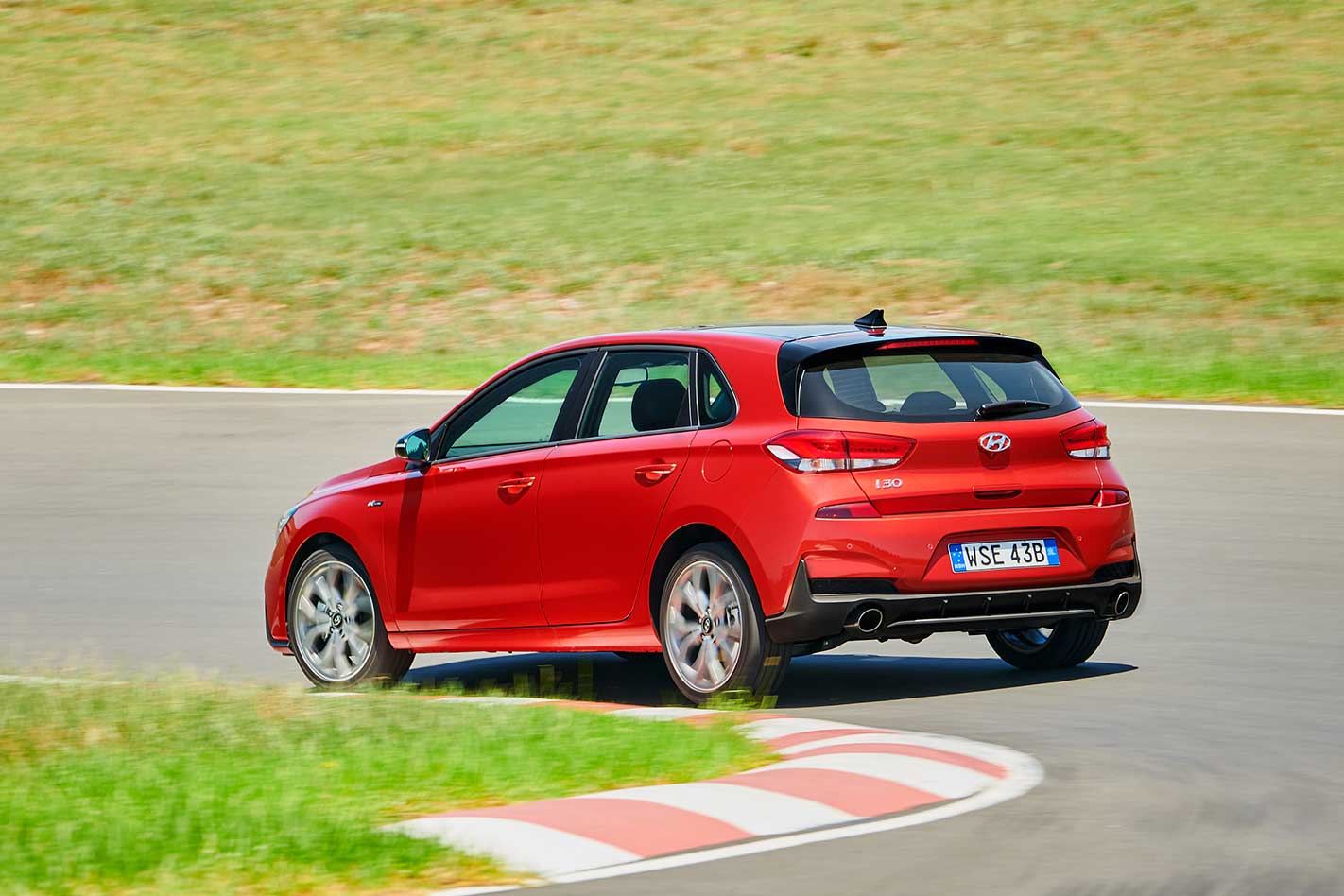
Verdict (7.5/10)
The i30 N-Line nails its brief. As something designed to water down Hyundai’s i30 N into a more accessible package, it delivers good back-road fun, rival-thumping grunt and genuine everyday road manners without the traditional compromises that come with a hot hatch.
The N-Line is a car you would genuinely take for a drive for the sake of it. When you consider that its mechanical package costs as little as $31,420 for the base N-Line DCT, making it more affordable than half of its rivals, you can see why Hyundai wants to keep it around – even if it misses out on a fancy new European face.
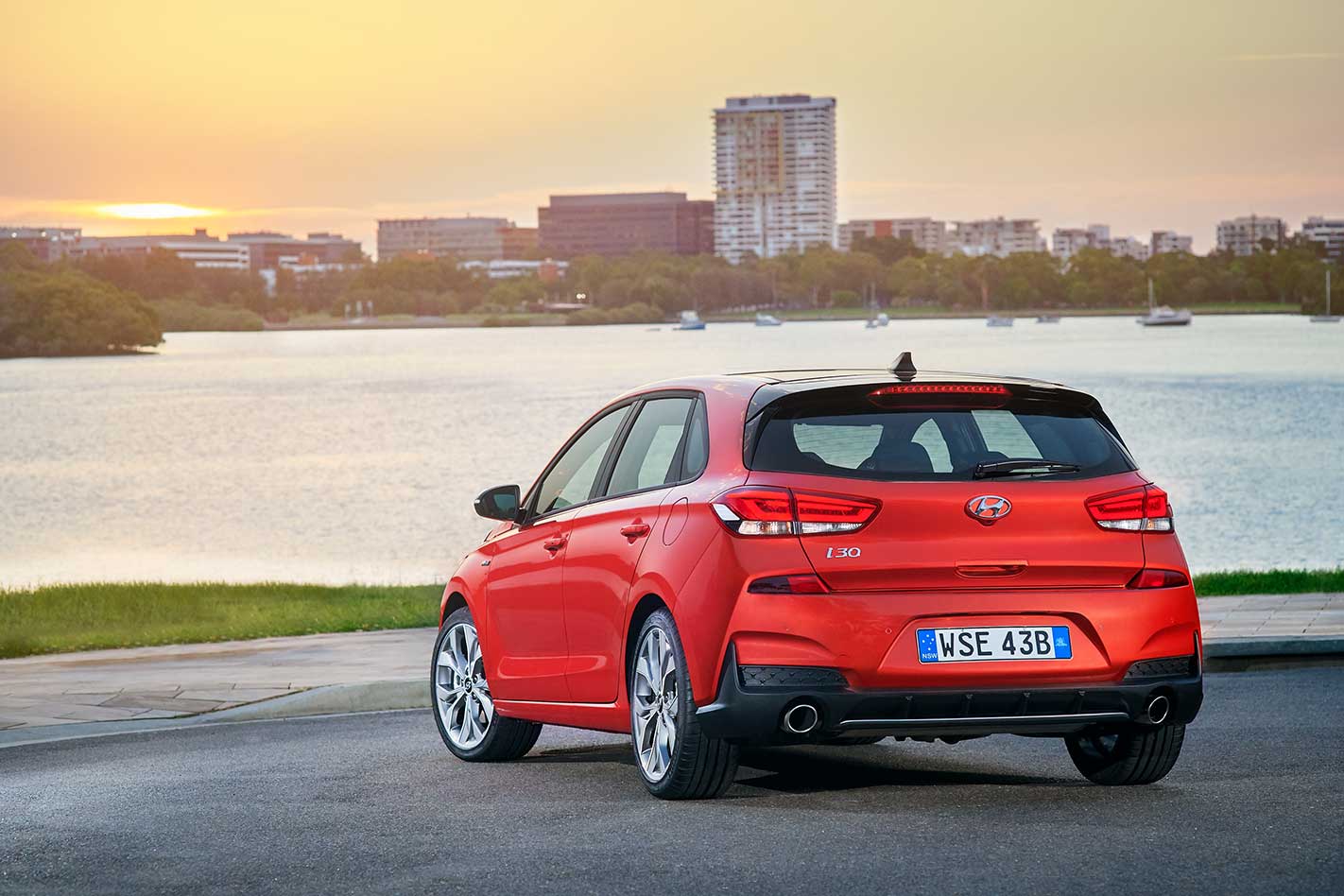
And if it’s luxury you’re after, then you should look towards Mazda’s classier 3. But as far as a driving experience goes, Hyundai’s risk paid off.
Like: Handling, transmission response, grip, noise
Dislike: Price, un-facelifted update
Specifications
Body: 4-door, 5-seat hatch
Drive: front-wheel
Engine: 1591cc inline-4cyl, DOHC, 16v, turbo
Power: 150kW @ 6200rpm
Torque: 265Nm @ 4700rpm
Fuel economy: 7.1L/100km (claimed)
Transmission: 7-speed dual-clutch automatic
Weight: 1344kg
Price: $36,220 (before on-roads)




